Nasal Splints (NS): Preserving Nasal Perfection: Surgical Splints Redefined – Market Insight, Clinical trial, Product Analysis, Patent Analysis, Competitive Analysis and Market Forecast – 2024-2034
Nasal splints serve as crucial postoperative companions, resembling a protective cast for the nose and ensuring the preservation of its newly acquired shape following specific surgical interventions. These devices, commonly referred to as nose splints, play an integral role in the recovery process post nasal surgeries.
Focused on rectifying issues with the septum, septoplasty is a surgical procedure where nasal splints play a pivotal role in postoperative care.
Addressing severe cases of a deviated septum, rhinoseptoplasty involves the use of nasal splints to ensure the correction is maintained.
A cosmetic procedure aimed at reshaping the nose, rhinoplasty necessitates the use of nasal splints to preserve the desired aesthetic outcome.
Nasal splints are instrumental in surgeries targeting the sinus, aiding in recovery and maintaining optimal nasal function.
Post-repair of nasal fractures, splints are employed to secure and stabilize the nasal structure during the healing process.
A competitive landscape in the nasal splints domain is marked by the presence of key market players, including:
These entities contribute to advancements in nasal splint technology, ensuring the continuous improvement of postoperative care and patient outcomes in the field of nasal surgeries.
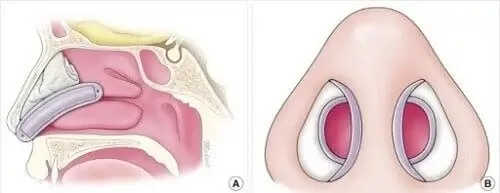
Figure 1 Credits: >>
Assess the global landscape of nasal splints, focusing on market size, growth trends, and key industry players.
Explore innovations in nasal splints technology, emphasizing clinical applications and their impact on post-surgical care.
Examine the adaptive mechanisms of nasal splints in addressing postoperative recovery, considering potential therapies and advancements.
Provide a roadmap of existing nasal splint products, highlighting their role in preserving post-surgery nasal shape and function.
Explore medical and therapeutic options for supporting recovery after nasal surgeries, emphasizing the combined approach with nasal splints.
Investigate factors driving nasal splint market growth, focusing on emerging trends and technological advancements influencing adoption.
Highlight opportunities for advancements in nasal splint technology, showcasing ongoing research initiatives contributing to improved postoperative care.
Provide concise projections on the growth of the nasal splints market, considering technological advancements and their impact on patient outcomes.
To effectively position Nasal Splint offerings and assess their competitive stance, a thorough understanding of the developmental landscape, competitor strategies, and anticipated advancements in nasal splint technology is essential.
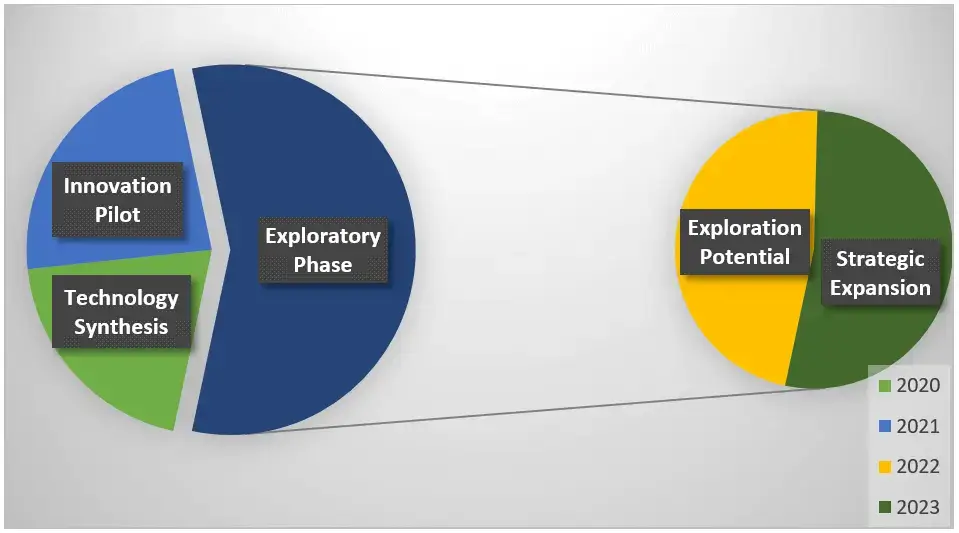
Figure 2 Ongoing technological Research
Profiles of stakeholders driving Nasal Splints advancements offer insights into financials, product portfolios, and recent innovations in the field.
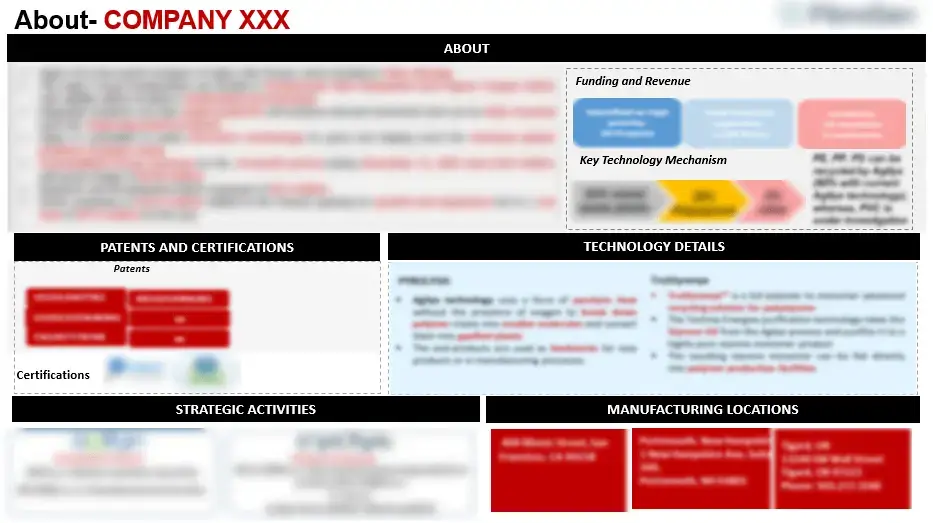
Figure 3 Company Portfolio
This report analyzes patents in Nasal Splints, revealing key innovations and opportunities for enhancement or collaboration in the field.
Anticipating trends, growth opportunities, and key factors in a concise report. Quantitative insights on market size, revenue forecasts, and growth potentials provided.
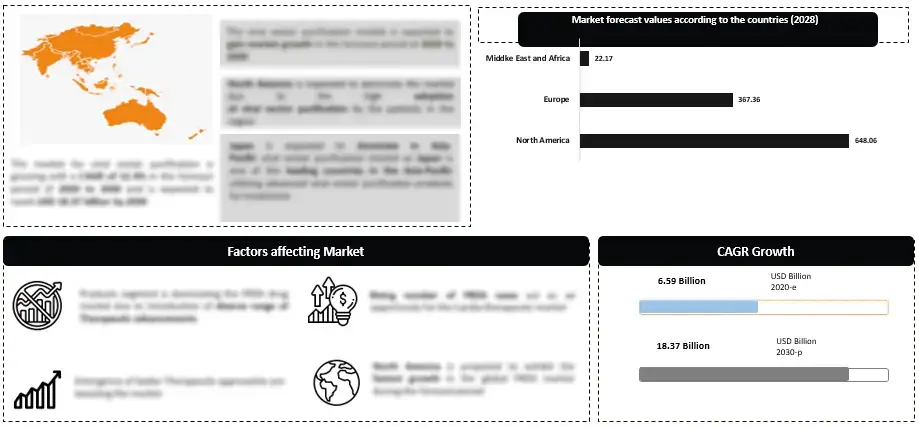
Figure 4 Market Forecast
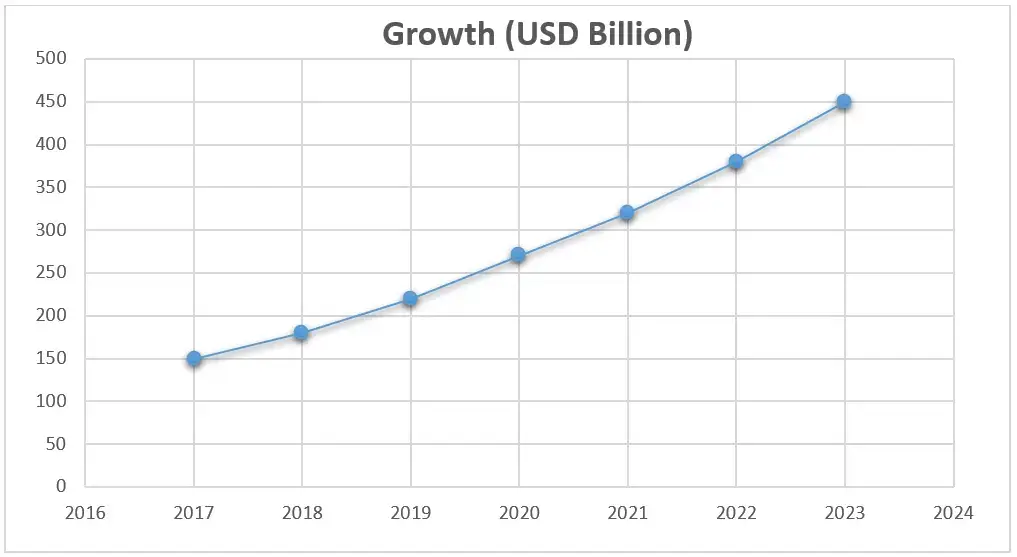
Figure 5 Yearly Market Growth, 2016-2024 (USD Billion)
(Segmented in terms of the financial growth)
This report on Nasal Splints showcases key players, offering concise profiles with insights into market shares, strengths, weaknesses, and strategic approaches.
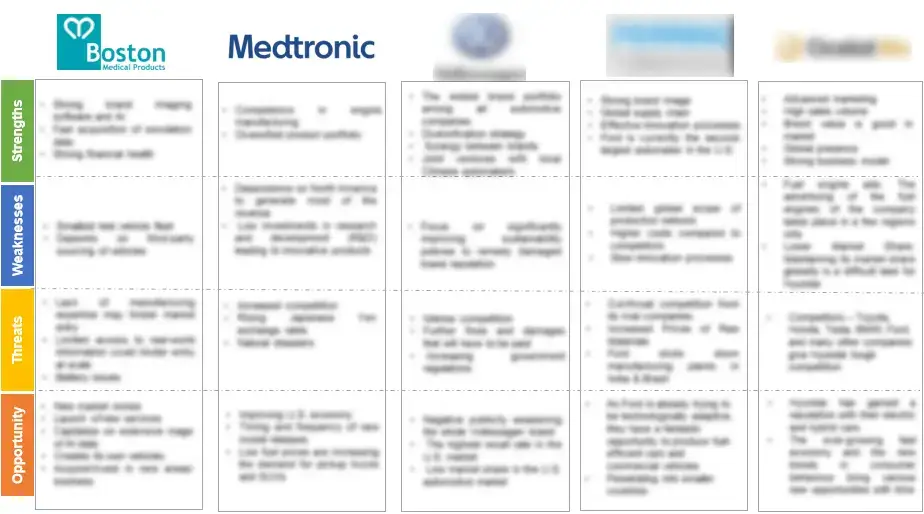
Figure 6 SWOT Analysis of the direct competitors
In order to give the most precise estimations and forecasts, Wissen Research uses an extensive and iterative research approach that is focused on reducing deviation. The company blends top-down and bottom-up methodologies for market segmentation and quantitative estimation. In addition, data triangulation, which examines the market from three separate angles, is a recurrent topic present in all of our research studies. Important components of the approach used for all of our studies include the following:
Preliminary data mining
On a wide scale, unprocessed market data is collected. Continuous data filtering makes sure that only verified and authenticated sources are taken into account. Additionally, data is extracted from a wide range of reports in our repository and from a number of reputable premium databases. We gather information from raw material suppliers, distributors, and purchasers to help with this since understanding the entire value chain is crucial for a thorough understanding of the market.
Surveys, technical symposia, and trade magazines are used to gather information on technical concerns and trends. Technical information focusing on white space and freedom of movement is also obtained from an intellectual property standpoint. Additionally, information on the industry’s drivers, constraints, and pricing patterns is obtained. As a result, a variety of original data are included in the material that is then cross-validated and certified with published sources.
Statistical model
We use simulation models to generate our market projections and estimates. Every study receives a special model that is tailored to it. Data for market dynamics, the technology environment, application development, and pricing patterns are gathered and supplied into the model all at once for analysis. The relative relevance of these factors is investigated, and their impact on the forecast period is assessed, using correlation, regression, and time series analysis. The process of market forecasting combines technological analysis with economic strategies, practical business acumen, and subject expertise.
Econometric models are frequently used for short-term forecasting, but technology market models are typically employed for long-term forecasting. These are based on a confluence of the business environment, regulatory environment, economic projection, and technical landscape. In order to develop global estimates, it is preferable to estimate markets from the bottom up by integrating data from key regional markets. This is required to ensure accuracy and a complete comprehension of the subject. Among the variables taken into account for forecasting are:
Regulations and anticipated developments
We give these criteria weights and use weighted average analysis to assess their market influence in order to calculate the anticipated market growth rate.
Primary research | Secondary research |
· Manufacturers · Technology distributors and wholesalers · End-user surveys · Consumer surveys | · Company reports and publications · Government publications · Independent investigations · Economic and demographic data · Online searches · Research reviews · Reference customers |
1.1 Overview of Nasal Splints
1.1.1 Definition and Ty pes of Nasal Splints
1.1.2 Scope and Applications of Nasal Splints
1.1.3 Benefits and Current State of Nasal Splint Technology
1.1.4 Key Findings
1.1.5 Market Insights and Highlights
1.1.6 Research Background
1.1.7 Scope and Methodology
2. Technological Landscape of Nasal Splints
2.1 Types of Nasal Splints
2.1.1 By Mode of Administration
2.1.2 By Product Technology
2.2 Composition and Characteristics
2.3 Emerging Technologies in Nasal Splints
3. Market Dynamics
3.1 Market Drivers and Challenges
3.2 Regulatory Landscape in Nasal Splints
4. Patent Analysis
4.1 Top Assignees in Nasal Splints Technology
4.2 Geography Focus of Top Assignees
4.3 Legal Status of Nasal Splints Patents
4.4 Assignee Segmentation
4.5 Network Analysis of Top Collaborating Entities in Nasal Splints Patent Applications
4.6 Technology Evolution in Nasal Splints
4.7 Key Patents in Nasal Splints
4.8 Patent Trends and Innovations
4.9 Key Players and Patent Portfolio Analysis
5. Clinical Trial Analysis
5.1 Overview of Nasal Splints Clinical Trials
5.2 Analysis by Trial Registration Year
5.3 Analysis by Phase of Development
5.4 Analysis by Number of Patients Enrolled
5.5 Analysis by Status of Trial
5.6 Analysis by Study Design
5.7 Analysis by Type of Product
5.8 Analysis by Geography
5.9 Analysis by Key Sponsors/Collaborators
6. Market Forecast (2024-2034)
6.1 Methodology
6.2 Assumptions
6.3 Projected Growth of Nasal Splints Market (2024-2034)
6.3.1 Global Nasal Splints Market (2024-2034)
6.3.1.1By Mode of Administration
6.3.1.1.1 External Nasal Splints
6.3.1.1.2 Internal Nasal Splints
6.3.1.2 By Type of Product
6.3.1.2.1 Malleable Nasal Splints
6.3.1.2.2 Airway Nasal Splints
6.3.1.2.3 Bivalve Nasal Splints
6.3.2 Global Market Value Forecast in North America, Europe and Asia Pacific
6.3.2.1 By Mode of Administration
6.3.2.1.1 External Nasal Splints
6.3.2.1.2 Internal Nasal Splints
6.3.2.2 By Type of Product
6.3.2.2.1 Malleable Nasal Splints
6.3.2.2.2 Airway Nasal Splints
6.3.2.2.3 Bivalve Nasal Splints
7.1 Benchmarking Parameters
7.2 Scoring of Different Companies
7.3 Top Company Profiles
7.3.1 Boston Medical Products Inc.
7.3.2 Summit Medical LLC
7.3.3 Olympus
7.4 Product Portfolio Analysis
7.5 Recent Developments and Strategies
8. Future Outlook and Market Opportunities
8.1 Technological Advancements in Nasal Splints
8.2 Unmet Needs and Potential Market Gaps
9. Conclusion
10. Appendix
10.1 Glossary of Terms
10.2 List of Abbreviations
S.no | Key Highlights of Report | |
1. | Patent Analysis | · Top Assignee · Geography focus of top Assignees · Assignee Segmentation · Technology Evolution · Key Patents · Application and Issued Trend · Key technology |
2. | Market analysis | · Current Nasal Splints and Applications · Emerging Technologies and Research Developments (by product analysis and scientific analysis) · Strategic activities · Company portfolio · Detailed profiles of the key players that are engaged in the development of the Nasal Splints |
3. | Clinical Trials | · Analysis of clinical trial through graphical representation · Coverage of testing from the trail phases till commercialization |
4. | Forecast | · Detailed comprehension of the historic, current and forecasted trend of market by analysis of their impact on the market |
5. | Opportunity Analysis | · Technology evolution based on problem solution · Potential licensees · Advancement trends · Unmet needs · SWOT · Drivers and barriers |
6. | KOLs | · A detailed analysis and identification of the Key Opinion Leaders (KOLs), shortlisted based on their contributions |
LIST OF FIGURES
Figure number | Description |
Figure 1 | Terminology of Nasal Splints Over The Years |
Figure 2 | Nasal Splints – History and Present |
Figure 3 | Projection of Nasal Splints till 2034 in different geographies |
Figure 4 | Technology Categorization For Nasal Splints |
Figure 5 | Recent Technology Trends in Nasal Splints |
Figure 6 | Technology Evolution in Nasal Splints |
Figure 7 | Geographical Distribution of Patents of Top Assignees |
Figure 8 | Assignee Segmentation (Companies) |
Figure 9 | Assignee Segmentation (Educational Establishment) |
Figure 10 | Patent Based Key Insights Of xx |
Figure 11 | Patent Based Key insights of xx |
Figure 12 | Patent Based Key insights of xx |
Figure 13 | Geographic Distribution of the Universities/Research Organizations Filling Patents On Various Technology advancements |
Figure 14 | Key Summary Regarding the Patent Filing On Nasal Splints |
Figure 15 | Product Pipeline of Different innovations with Companies Name |
Figure 16 | Portfolio for Government Approved Nasal Splints |
Figure 17 | Key Growth Drivers for Nasal Splints Market |
Figure 18 | Restraints for Nasal Splints Market |
Figure 19 | xx Portfolio (Top Player) |
Figure 20 | xx Portfolio (Top Player) |
Figure 21 | xx Portfolio (Top Player) |
Figure 23 | xx Portfolio (Top Player) |
Figure 24 | xx Portfolio (Top Player) |
Figure 25 | xx Portfolio (Start-up) |
Figure 26 | xx Portfolio (Start-up) |
Figure 27 | xx Portfolio (Start-up) |
Figure 28 | Strategic Activities Including Collaboration, Partnerships and Acquisitions |
Figure 29 | Research Methodology for Patent, Selection and Analysis |
LIST OF GRAPHS
Graph number |
Description |
Graph 1 | Problem Solution Analysis |
Graph 2 | Top Assignees in Nasal Splints |
Graph 3 | Technology Focus of Top Assignees (IPC-CPC Classes) |
Graph 4 | Top Countries of Origin of Patents |
Graph 5 | New entrants in NS field |
Graph 7 | Legal Status |
Graph 8 | Most Cited Patents |
Graph 9 | Patents with Largest Invention Families |
Graph 10 | Most Claim-Heavy Patents |
Graph 11 | Filing Trends |
Graph 12 | Weighted Scores for Top 64 Players According to Benchmarking Criteria |
Graph 13 | Nasal Splints (CAGR: 2023-2034) |
Graph 14 | Nasal Splints Market Share: Distribution by Key Geographical Area, 2023-2034 |
LIST OF TABLES
Table number | Description |
Table 1 | Parameters included and excluded for conducting the analysis |
Table 2 | Technology Classes with Definitions |
Table 3 | Patent Litigation |
Table 4 | Highest Market Valued Patents |
Table 5 | SWOT Analysis of Top 3 Players |
Table 6 | Parameters and their score for Benchmarking |
Table 7 | Weighted scores for top 5 players according to benchmarking criteria |
© Copyright 2024 – Wissen Research All Rights Reserved.